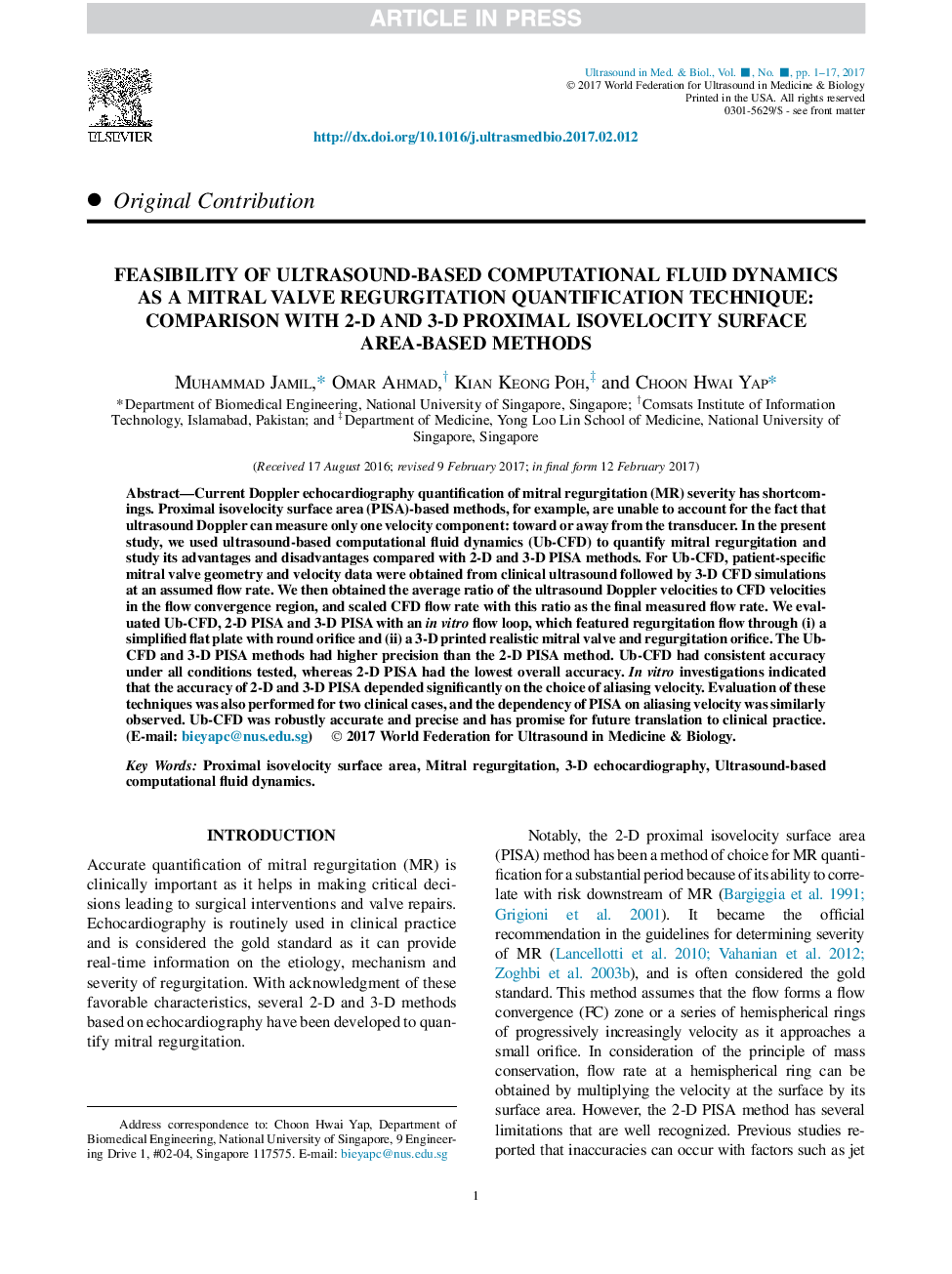| Article ID | Journal | Published Year | Pages | File Type |
|---|---|---|---|---|
| 5485637 | Ultrasound in Medicine & Biology | 2017 | 17 Pages |
Abstract
Current Doppler echocardiography quantification of mitral regurgitation (MR) severity has shortcomings. Proximal isovelocity surface area (PISA)-based methods, for example, are unable to account for the fact that ultrasound Doppler can measure only one velocity component: toward or away from the transducer. In the present study, we used ultrasound-based computational fluid dynamics (Ub-CFD) to quantify mitral regurgitation and study its advantages and disadvantages compared with 2-D and 3-D PISA methods. For Ub-CFD, patient-specific mitral valve geometry and velocity data were obtained from clinical ultrasound followed by 3-D CFD simulations at an assumed flow rate. We then obtained the average ratio of the ultrasound Doppler velocities to CFD velocities in the flow convergence region, and scaled CFD flow rate with this ratio as the final measured flow rate. We evaluated Ub-CFD, 2-D PISA and 3-D PISA with an in vitro flow loop, which featured regurgitation flow through (i) a simplified flat plate with round orifice and (ii) a 3-D printed realistic mitral valve and regurgitation orifice. The Ub-CFD and 3-D PISA methods had higher precision than the 2-D PISA method. Ub-CFD had consistent accuracy under all conditions tested, whereas 2-D PISA had the lowest overall accuracy. In vitro investigations indicated that the accuracy of 2-D and 3-D PISA depended significantly on the choice of aliasing velocity. Evaluation of these techniques was also performed for two clinical cases, and the dependency of PISA on aliasing velocity was similarly observed. Ub-CFD was robustly accurate and precise and has promise for future translation to clinical practice.
Related Topics
Physical Sciences and Engineering
Physics and Astronomy
Acoustics and Ultrasonics
Authors
Muhammad Jamil, Omar Ahmad, Kian Keong Poh, Choon Hwai Yap,
